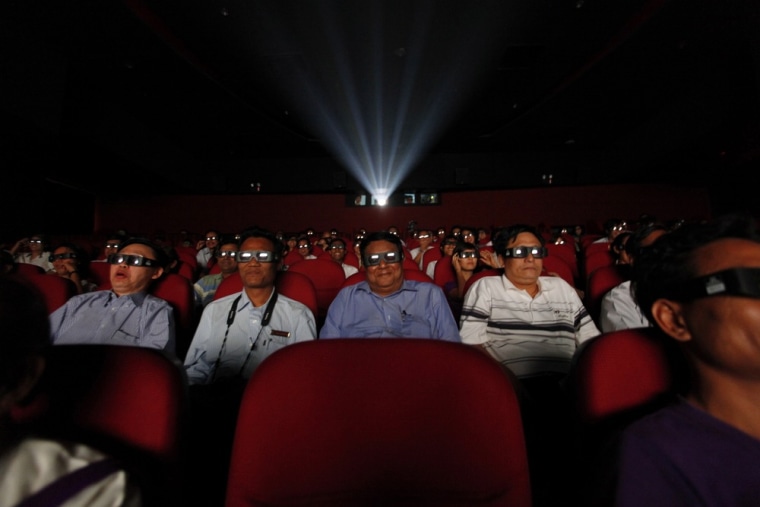If you found yourself feeling a little woozy while watching 3-D films like "Avatar" or "Tron," you won't be surprised to hear this. More than half the people who put on the special glasses and caught a showing of a 3-D flick reported the movie made them feel sick to some degree, a new study suggests.
Roughly 55 percent of viewers had at least one physical complaint after the experience, according to research recently published in the journal PLoS ONE.
The most common gripes among moviegoers were that their eyes felt tired or they had a headache. But nearly 11 percent felt like they wanted to puke.
"I was surprised by the relatively high proportion of people who reported symptoms after a 3-D movie," said study author Angelo Solimini, Ph.D, an adjunct professor and research scientist in hygiene and public health at Sapienza University of Rome.
But there's no reason to shy away from a showing of movies like "Up" or the soon-to-be-released "Oz: The Great and Powerful." Solimini pointed out that viewer's symptoms were usually mild and seemed to disappear as soon as they took off their 3-D glasses -- except, perhaps if it triggered a headache.
Although Solimini has only seen one 3-D movie, "Despicable Me," he got the idea for this study after chatting with a group of parents. After taking their children to see a 3-D film, many of the mothers complained of physical discomforts, but their kids did not.
To look into these side effects, he rounded up 497 healthy adults in Italy, ages 18 to 65. Participants were asked to see one 2-D movie and one 3-D film during a three-week period. They could choose whichever movies they wanted as long as they didn't see the 2-D and 3-D flick on the same day.
Before and after seeing each flick, participants completed questionnaires about their movie-going experience, in which they rated their symptoms in three main areas: nausea, vision problems and dizziness.
Close to 55 percent of the viewers of the 3-D flick reported some level of sickness following the film compared to only 14% of those watching a 2-D film.
Nearly half of the 3-D viewers complained that the film hurt their eyes. It strained their eyes, blurred their vision, or made it hard to focus.
Slightly more than one in five 3-D moviegoers felt somewhat disoriented at the theater. They had a headache, or felt off-balance or dizzy, whether their eyes were open or shut.
About one in 10 3-D film attendees felt queasy during the show.
Some individuals were more prone to these unpleasant feelings than others. The study found that women, especially those with a history of car sickness, vertigo, or frequent headache, may be more vulnerable to these symptoms.
As for why some people find it harder to handle 3-D movies than others do, Solimini suggests it's because the distance at which our eyes converge is different from where they focus. This mismatch causes extra work for the visual system that for some individuals may result in these annoying side effects.
The most susceptible people, he explains, are those with unequal vision in both eyes or those with small vision misalignments.
Solimini draws an analogy between seeing a 3-D film and riding a roller coaster. Both are forms of entertainment in which some people may be willing to put up with an increase in symptoms and mild -- but temporary -- discomfort as part of the experience.
Related:
1 in 4 indulge bizarre late-night food cravings
